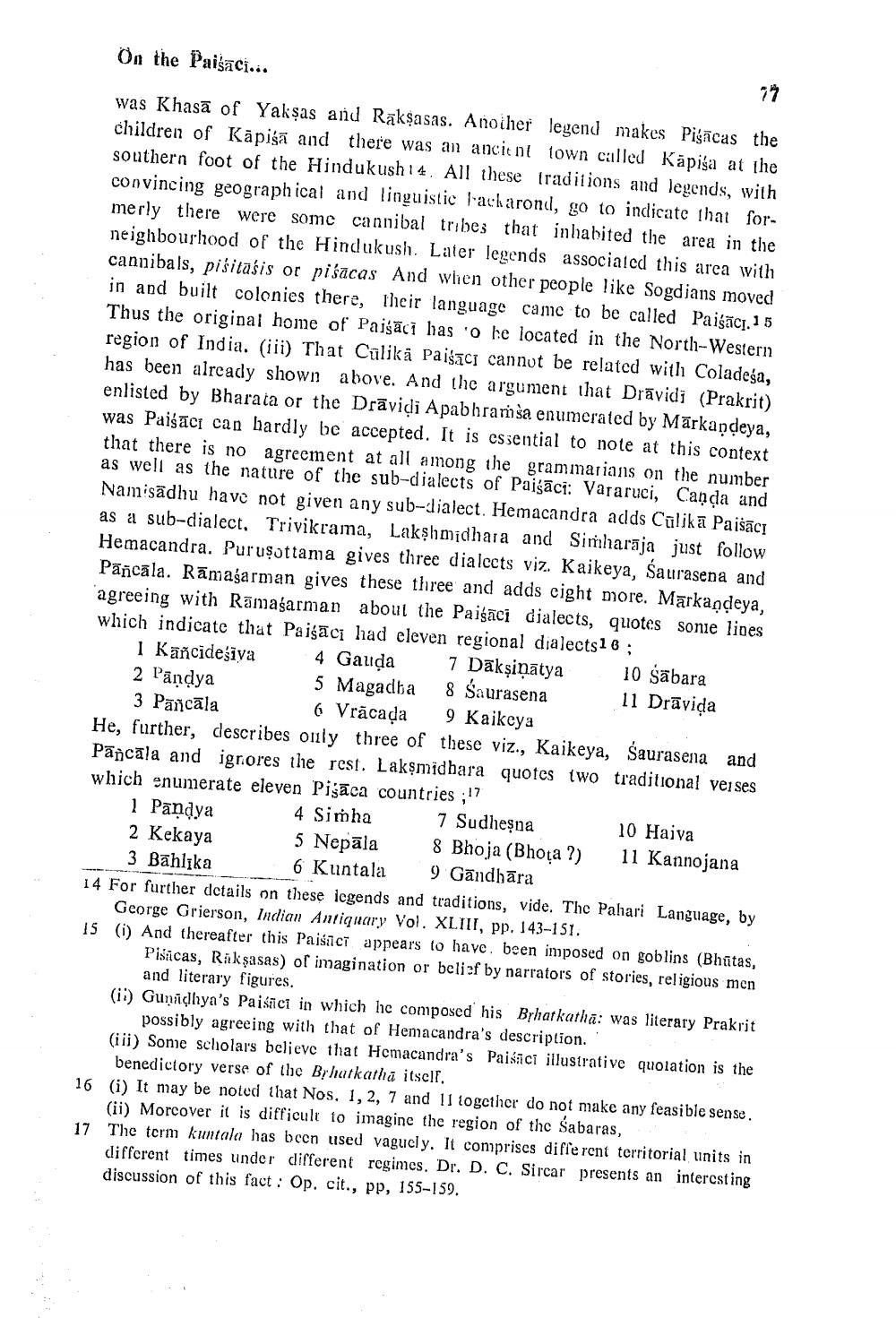________________
On the Paisaci...
77
was Khasa of Yakṣas and Rakṣasas. Another legend makes Pigñcas the children of Kapiga and there was an ancient town called Kapiga at the southern foot of the Hindukush 14. All these traditions and legends, with convincing geographical and linguistic Fackarond, go to indicate that formerly there were some cannibal tribes that inhabited the area in the neighbourhood of the Hindukush. Later legends associated this area with cannibals, pisitasis or pisacas And when other people like Sogdians moved in and built colonies there, their language came to be called Paigaci. 15 Thus the original home of Paisaci has o he located in the North-Western region of India. (iii) That Culika Paisaci cannot be related with Coladega, has been already shown above. And the argument that Dravidi (Prakrit) enlisted by Bharata or the Draviḍi Apabhramsa enumerated by Markaṇḍeya, was Paisac can hardly be accepted. It is essential to note at this context that there is no agreement at all among the grammarians on the number as well as the nature of the sub-dialects of Paigaci: Vararuci, Canda and Namisādhu have not given any sub-dialect. Hemacandra adds Culikā Paišāci as a sub-dialect, Trivikrama, Lakshmidhara and Simharaja just follow Hemacandra. Purusottama gives three dialects viz. Kaikeya, Saurasena and Pañcala. Rāmagarman gives these three and adds eight more. Markandeya, agreeing with Ramagarman about the Paigaci dialects, quotes some lines which indicate that Paisaci had eleven regional dialects16;
4 Gauḍa
5 Magadha
6 Vracaḍa
9 Kaikeya
He, further, describes only three of these viz., Kaikeya, Saurasena and Pancala and ignores the rest. Lakṣmidhara quotes two traditional verses which enumerate eleven Pisaca countries;17
4 Simha
1 Kañcideśiva
2 Pandya
3 Pancala
1 Pandya
2 Kekaya
3 Bahlika
5 Nepāla 6 Kuntala
7 Dākṣiņātya 8 Śaurasena
7 Sudheṣna
8 Bhoja (Bhota ?) 9 Gandhāra
10 Sabara 11 Draviḍa
10 Haiva
11 Kannojana
14 For further details on these legends and traditions, vide. The Pahari Language, by
George Grierson, Indian Antiquary Vol. XLIII, pp. 143-151.
15 (1) And thereafter this Paisacī appears to have been imposed on goblins (Bhutas, Pisicas, Raksasas) of imagination or belief by narrators of stories, religious men and literary figures.
(ii) Gunidhya's Paisact in which he composed his Brhatkatha: was literary Prakrit possibly agreeing with that of Hemacandra's description.
(iii) Some scholars believe that Hemacandra's Paisici illustrative quotation is the benedictory verse of the Brhatkatha itself,
16 (i) It may be noted that Nos. 1, 2, 7 and 11 together do not make any feasible sense. (ii) Morcover it is difficult to imagine the region of the Sabaras,
17 The term kuntala has been used vaguely. It comprises different territorial units in different times under different regimes. Dr. D. C. Sircar presents an interesting discussion of this fact: Op. cit., pp, 155-159.




